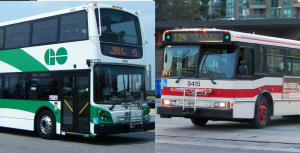Editorial

February 5th was a red letter day for public transit users across the Greater Toronto Area following an announcement by the Ford government that disclosed the final specifics of a long overdue fare integration plan.
The plan, which took effect last Monday, aims to unify fare systems across the Greater Toronto Area, enabling riders to be charged for a single transit trip, irrespective of the number of buses, subways, or streetcars utilized, even when crossing different cities. The government anticipates an average savings of $1,600 per transit rider and aspires to attract nine million new journeys annually.
As of last Monday, for example, a rider transferring from the GO Transit system to the TTC will not be charged for using the TTC. This applies to transferring between any of the systems across the GTA.

For those who are concerned about poverty reduction and global warming, this change was long overdue, yet it merely scratches the surface of what needs to be done to bring about a more equitable society and a healthy environment.
Making the point in favour of affordable or free public transit as a way reducing the toxic fumes from fossil fuel burning vehicles is an easy sell across all classes simply because the rich and poor must breathe the same air.
However, it’s not a slam dunk when the argument is made that free public transit is not only a way of removing an onerous financial burden from the poor and working poor while at the same time reducing the cost of public transit in the long run.
The basic argument against free public transit is that it is too costly and cannot be afforded. Yet our readings show that the idea of free public transit is growing worldwide, and there is enough evidence to show it can be afforded.
To finance fare-less transit, various options can be explored. For example, Greenpeace Germany proposes a levy on car manufacturers, while France collects a small transit-focused tax from employers with 11 or more employees.
Redirecting funds from road construction projects, repurposing roadway space, and utilizing congestion fees can also contribute to financing free transit. Additionally, replacing mandatory parking requirements with contributions to a transit fund from businesses, public institutions, and developers can be a novel approach.
Fare-free transit is also logical. It improves the basic mobility for work, household tasks, and societal participation. Transit, like libraries, parks, schools, and healthcare, should be accessible to all as a public service. Additionally, the urgency of addressing the climate crisis supports the promotion of public transit to ease congestion and enhance street safety.
Abolishing fares in an expensive and unequal city, such as Toronto, could significantly improve the quality of life for poor and working-class residents. Redirecting the money spent on fare enforcement could be put to better use.


